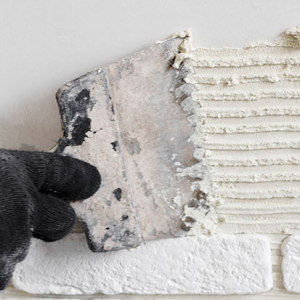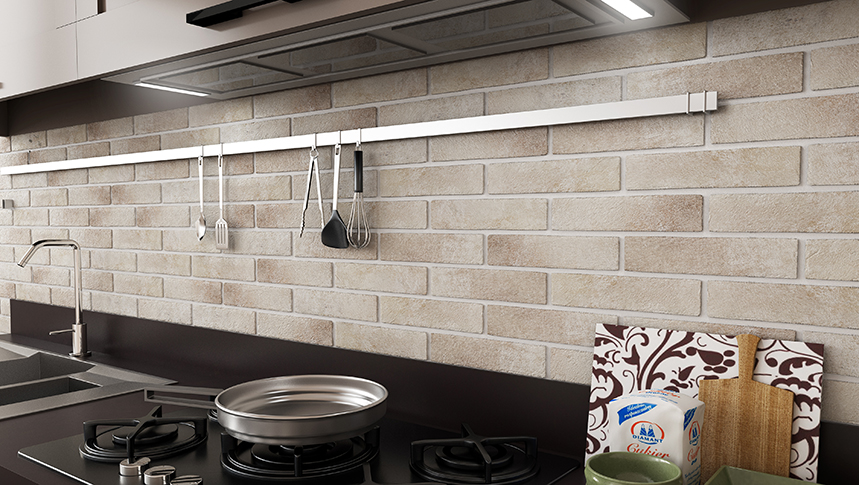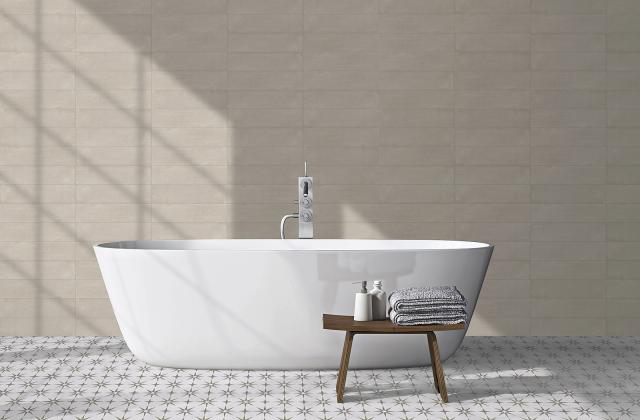
Tile Mastic vs. Thinset Mortar: Buying Guide
Any adhesive for tiles, wainscot, backsplashes, and a range of other top-surface finish materials needs to be cost-effective, strong, and easy to apply. Sag during the curing process is a major concern for vertical applications. Moisture is another consideration. Tile is installed in a range of moisture conditions, from areas that experience high amounts of water to zero-water places. Typical residential places with high and prolonged amounts of water include shower pans, hot tubs, and swimming pools. Areas on the other end of the moisture spectrum include any interior residential space that is not a bathroom or kitchen, wall wainscots, kitchen headguards, kitchen backsplashes, and bathroom backsplashes.
When laying ceramic or porcelain tile, liquid adhesives are necessary for the tile to fulfill all of these conditions and to firmly stick to its substrate. Mastic and thinset mortar are types of adhesives most often used for ceramic, porcelain, and glass tile installations. Both materials can be confusing because of several overlapping applications. Which should you use and where should you use them?

Tile Thinset
Inorganic and composed of materials mined from the earth, thinset is inexpensive and can be purchased either in wet, pre-mixed, or dry, powdery form. Additionally, thinset comes in either unmodified or modified versions. Unmodified thinset is composed of Portland cement, sand, and water retention agents. Modified thinset contains the same elements, along with liquid latex polymers to aid with strength and increase the working time.
A feature of thinset that is both a plus and a minus is that it is slow to set. This is a plus because it affords a longer working time to fix any misaligned tiles. It can be a minus when working with vertical applications such as bathroom walls and kitchen tile backslashes because this extra curing time also allows the tile to sag. Plastic tile spacers, liberally placed, are the solution for tile sag.
Some areas that work well with thinset include:
- Shower pans
- Shower walls
- Bathroom floors
- Bathroom walls
- Kitchen floors
- Kitchen countertops
- All floors
Tile Mastic
Mastic is a vague term that generally refers to fast-grab glues for tile. Traditionally, mastic was an organic plant-based resin from the Pistacia lentiscus shrub, and its term is related to the word masticate, due to its sticky, gummy consistency. Today, the term mastic is infrequently used, and it is difficult to find tile adhesives that go under the mastic banner at your local home center. For the sake of clarity, look for tile adhesives advertised as fast grabbing with no-sag qualities that are generally used for porcelain, quarry, stone, ceramic, and mosaic tile. Some areas where tile mastic may be used:

Many shower walls are done with ceramic tile and mastic. It is important to use a water-resistant drywall or backer board when doing so. Checking with the local building department would be a good idea before beginning the project.
- Kitchen walls
- Kitchen backsplashes
- Bathroom backsplashes
- Bathroom walls, if not adjoining a shower or tub
- Any walls where moisture is not prevalent
|
Thinset vs. Mastic Summary |
||
|
|
Thinset Mortar |
Mastic |
|
Moisture Factor |
Thinset can be used in very wet areas, even areas that will be completely submerged in water. |
Mastic can be used in dry or damp areas only. It cannot be used in areas that will be submerged in water, such as swimming pools. |
|
Best Areas |
Thinset can be used for showers, bathtubs, backsplashes, and other areas. |
Walls, wainscots, and dry backsplashes are key areas where tile mastic tends to be used. |
|
Pros |
Thinset is inexpensive and it fills in gaps and depressions. |
Mastic is very sticky, grabs fast, and is quick setting. |
|
Cons |
Thinset is slow to set, which leads to tile sag on vertical applications. |
Mastic can give off a sharp, strong odor that takes time to dissipate. |


